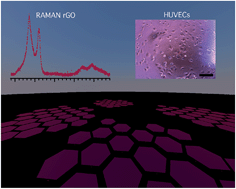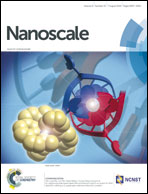Reduced graphene oxide growth on 316L stainless steel for medical applications
Abstract
We report a new method for the growth of reduced graphene oxide (rGO) on the 316L alloy of stainless steel (SS) and its relevance for biomedical applications. We demonstrate that electrochemical etching increases the concentration of metallic species on the surface and enables the growth of rGO. This result is supported through a combination of Raman spectroscopy, X-ray photoelectron spectroscopy (XPS), atomic force microscopy (AFM), scanning electron microscopy (SEM), density functional theory (DFT) calculations and static water contact angle measurements. Raman spectroscopy identifies the G and D bands for oxidized species of graphene at 1595 cm−1 and 1350 cm−1, respectively, and gives an ID/IG ratio of 1.2, indicating a moderate degree of oxidation. XPS shows –OH and –COOH groups in the rGO stoichiometry and static contact angle measurements confirm the wettability of rGO. SEM and AFM measurements were performed on different substrates before and after coronene treatment to confirm rGO growth. Cell viability studies reveal that these rGO coatings do not have toxic effects on mammalian cells, making this material suitable for biomedical and biotechnological applications.


 Please wait while we load your content...
Please wait while we load your content...